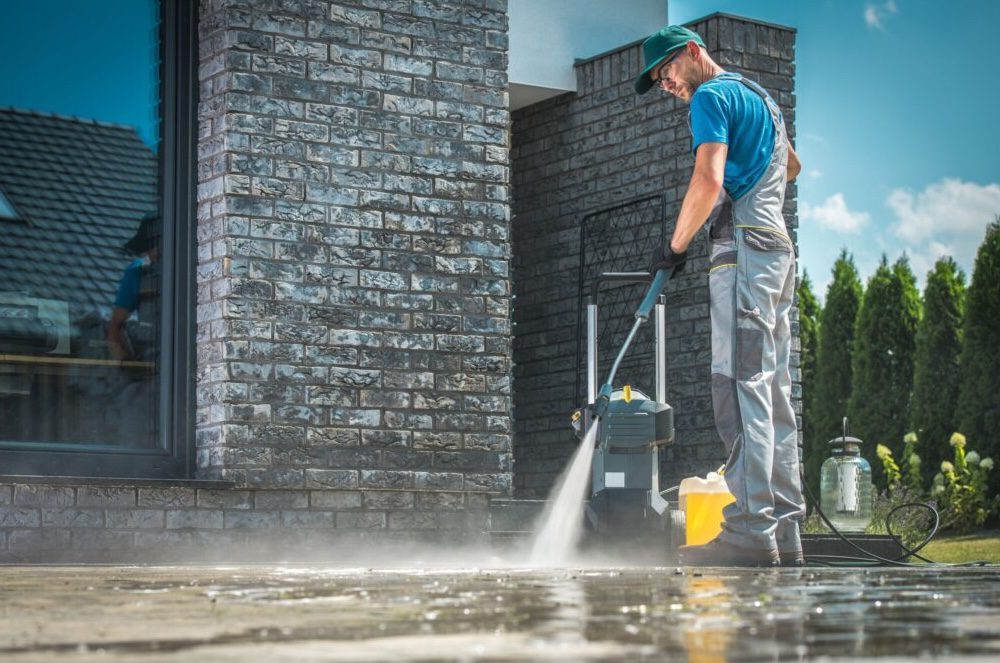A pressure washer is one of the most effective tools for maintaining outdoor spaces, vehicles, and machinery. But to keep it performing efficiently, regular pressure washer servicing is essential. Whether you’re using an electric or petrol-powered model, maintenance ensures optimal performance, safety, and longevity. Let’s dive into why servicing matters, explore the difference between Electric vs. Petrol Powered Pressure Washers, and learn the best way to pressure wash a deck safely and effectively.
Why Pressure Washer Servicing Is Important
Just like any other high-powered equipment, your pressure washer requires consistent care to avoid performance issues. Neglecting service can lead to pressure drops, leaks, and even pump failure — all of which can be costly to repair.
Here are key reasons why professional servicing matters:
1. Improved Performance
Over time, dirt, debris, and mineral deposits can clog filters, nozzles, and hoses. Regular cleaning and inspection help maintain strong water flow and pressure. This ensures your washer delivers consistent cleaning power when you need it most.
2. Extended Lifespan
Servicing helps prevent wear and tear on critical components like the pump, seals, and O-rings. A well-maintained unit can last years longer than one that’s neglected, saving you from early replacement costs.
3. Enhanced Safety
Leaks, damaged hoses, and faulty wiring can create safety hazards. Routine inspections catch these issues early, keeping both the operator and machine safe.
4. Cost Efficiency
Addressing small issues before they escalate prevents major repairs. In the long run, scheduled servicing is far cheaper than replacing pumps or engines.
For professional help and comprehensive maintenance, visit PowerBlast’s pressure washer servicing page. Their experts specialize in diagnosing, repairing, and maintaining all types of high-pressure cleaning systems.
What’s Included in a Pressure Washer Service?
A complete service typically includes a thorough check of all critical components. Here’s a breakdown of what professionals inspect during maintenance:
| Component | Service Action | Purpose |
| Pump Assembly | Oil check/replacement, seal inspection | Maintains optimal pressure and prevents leaks |
| Hoses & Fittings | Check for cracks, leaks, wear | Prevents loss of pressure and accidents |
| Nozzles & Wands | Clean or replace | Ensures even spray pattern |
| Motor/Engine | Tune-up, filter replacement | Improves reliability and reduces emissions |
| Electrical Parts | Inspect cords and switches | Prevents electrical hazards |
| Detergent System | Flush and clean | Prevents clogging from residue buildup |
Performing these checks regularly—ideally every 3 to 6 months depending on usage—keeps your washer ready for peak performance year-round.
Electric vs. Petrol Powered Pressure Washers: Which Is Better for You?
Choosing between an electric and petrol-powered pressure washer depends largely on how you plan to use it. Both have unique strengths suited for different cleaning needs. To help you make an informed decision, here’s a breakdown of their pros and cons. You can also find a detailed comparison on PowerBlast’s guide to Electric vs. Petrol Powered Pressure Washers.
### Electric Pressure Washers
Advantages:
- Quieter operation – ideal for residential areas.
- Lightweight and compact – easy to move and store.
- Minimal maintenance – no need for oil changes or spark plugs.
- Eco-friendly – zero emissions.
Best for:
Homeowners with light cleaning needs such as washing vehicles, garden furniture, or small patios.
Disadvantages:
- Limited by cord length or battery capacity.
- Typically lower PSI and flow rates compared to petrol models.
Petrol (Gas) Pressure Washers
Advantages:
- Extremely powerful – handles heavy-duty cleaning like driveways, fences, and construction equipment.
- Completely portable – no need for electrical outlets.
- Durable design – built for long working hours.
Best for:
Professionals, contractors, and users tackling large or industrial-scale cleaning projects.
Disadvantages:
- Requires regular engine maintenance (oil, filters, spark plugs).
- Noisier and produces emissions.
- Heavier and more expensive to run.
Verdict:
If you value convenience and light-duty cleaning, go electric. For power and portability, petrol is the way to go. Whichever you choose, consistent pressure washer servicing is key to long-term performance.
How to Pressure Wash a Deck or Patio the Right Way
Pressure washing your deck or patio can breathe new life into your outdoor space. However, it’s crucial to use the right settings and techniques to avoid damaging the wood or surface material. For a complete step-by-step guide, check out PowerBlast’s expert tips on pressure washing decks and patios.
Here’s a summary of the most effective process:
Step 1: Prepare the Area
Remove outdoor furniture, pots, and any fragile décor. Sweep away loose debris and check for protruding nails or damaged boards. Protect nearby plants and walls with plastic sheeting.
Step 2: Choose the Right Nozzle and Pressure
Use a wide spray angle (25°–40°) for wood surfaces. Keep the pressure low (500–1,200 PSI for timber) to prevent gouging. For concrete patios, a higher pressure setting can be used safely.
Step 3: Apply a Deck Cleaner
Using a wood-safe detergent helps loosen dirt, mold, and mildew. Apply it evenly with the washer’s soap nozzle and let it sit for 5–10 minutes before rinsing.
Step 4: Wash with the Grain
Always move the wand in long, steady strokes following the grain of the wood. Maintain a consistent distance (about 6–12 inches) to prevent streaking or damage.
Step 5: Rinse and Dry
Rinse thoroughly until all detergent residue is gone. Allow the deck to dry completely before applying a sealer or stain for added protection.
Tips for Maintaining Your Pressure Washer After Use
Once your cleaning job is done, proper shutdown and storage are just as important as servicing. Here are a few maintenance tips to keep your machine in top shape:
- Flush out detergent lines to prevent blockages.
- Release all water pressure from the hose and wand before disconnecting.
- Inspect and clean the nozzle tips for any debris buildup.
- Drain water completely before storing, especially in cold conditions to prevent freezing damage.
- Store indoors or under cover to avoid rust and corrosion.
For petrol models, remember to:
- Change the engine oil every 20–50 hours of use.
- Clean or replace the air filter regularly.
- Use fuel stabilizer if storing for long periods.
Final Thoughts
Your pressure washer is an investment in cleanliness and convenience. Whether you’re maintaining a backyard deck, commercial equipment, or a vehicle fleet, regular pressure washer servicing is what keeps that power consistent and reliable.
Understanding the difference between Electric vs. Petrol Powered Pressure Washers helps you choose the right unit for your needs, while following best practices when you pressure wash a deck ensures stunning results without damage.





























